Frida Kahlo, a name synonymous with artistry and resilience, has left an indelible mark on the world of art and culture. Born in 1907 in Mexico, Kahlo’s life was marked by both physical suffering and creative brilliance.
She is celebrated for her vibrant self-portraits, each a window into her inner world and the pain she endured. But why was Frida Kahlo famous?
It’s a question that extends beyond her captivating artwork. Kahlo’s fame lies in her ability to transcend mere artistic talent. She became an emblem of strength and empowerment, particularly for women and marginalized communities.
Her unapologetic embrace of her unique identity and heritage has inspired generations, sparking conversations about gender, identity, and pain.
In this exploration, we’ll delve into the various facets that contributed to Frida Kahlo’s enduring fame and her legacy that continues to shine brightly in the art world.
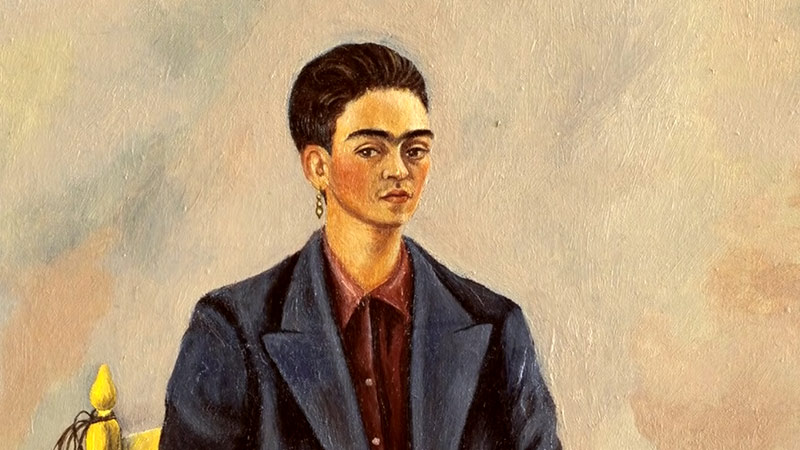
Why Is Frida Kahlo So Famous?
Frida Kahlo, the renowned Mexican artist, gained fame for several reasons, transcending the art world and becoming an iconic figure in global popular culture.
Here are some points that highlight why was Frida Kahlo famous:
Powerful Self-Portraiture
Frida Kahlo is celebrated for her striking and emotionally charged self-portraits. Her paintings delve into her personal struggles, physical pain, and emotional experiences.
Through her art, she provided a raw and unfiltered glimpse into her life, captivating viewers with her honesty and vulnerability.
Unique Artistic Style
Kahlo’s artistic style is distinctive and easily recognizable. Influenced by Mexican folk art and surrealism, her works often feature vivid colors, symbolic imagery, and a blend of realism and fantasy.
Her approach to art was deeply personal, drawing inspiration from her cultural heritage and indigenous Mexican traditions.
Exploration of Identity and Culture
Frida Kahlo’s art is deeply rooted in her identity as a Mexican woman.
She explored themes of identity, gender, and cultural heritage, becoming a symbol of empowerment and pride, especially for Mexican women and the LGBTQ+ community.
Impactful Feminist Icon
Kahlo’s life and art have made her an enduring feminist icon.
Her defiance of societal norms, her unapologetic representation of female experiences, and her exploration of female identity have resonated with generations of women seeking inspiration and empowerment.
Relationship with Diego Rivera
Frida’s tumultuous relationship with the famous Mexican muralist Diego Rivera is part of her legend. Their marriage, marked by passion, infidelity, and artistic collaboration, fascinated the public.
Their connection with political and artistic circles added to the intrigue surrounding Kahlo’s life.
Endurance Through Pain
Frida Kahlo faced numerous physical and emotional challenges throughout her life, including a near-fatal bus accident that left her with severe injuries.
Her ability to endure physical pain and channel her experiences into art is a testament to her strength and resilience.
Posthumous Recognition and Popularity
While Frida Kahlo achieved some recognition during her lifetime, her fame skyrocketed posthumously. Her art gained widespread acclaim, and she became a cultural and artistic icon.
The 2002 film “Frida,” starring Salma Hayek, further contributed to her global recognition.
Frida Kahlo’s legacy extends beyond her artistic contributions.
Her life story, her defiance of societal norms, and her ability to transform pain into art have left an indelible mark on art history and continue to inspire people worldwide.
Characteristics of Frida Kahlo’s Art Style
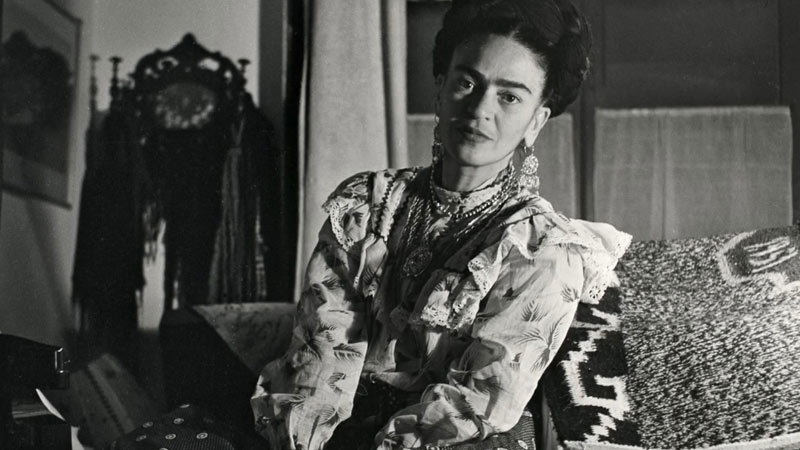
Frida Kahlo’s art style is characterized by its unique blend of surrealism, folk art, and realism. She often incorporated personal symbolism and allegory into her work, using her art to express her innermost thoughts and emotions.
She is best known for her self-portraits, which feature intense, unflinching depictions of her physical and emotional pain. Her use of bright colors and bold lines, combined with her incorporation of Mexican folk art motifs, gives her work a distinctive visual style.
Frida Kahlo, the renowned Mexican artist, is celebrated for her distinctive and deeply personal art style. Her works, often categorized within Surrealism and Naïve art, are characterized by several unique features:
Symbolism and Personal Iconography
One of the most striking characteristics of Frida Kahlo’s art is the rich symbolism and personal iconography that permeate her works.
She often used symbols and imagery to convey her emotions, pain, and cultural identity.
For example, symbols like monkeys, butterflies, and thorns were recurring elements in her paintings, each carrying specific personal and cultural meanings.
Self-Portraiture and Autobiographical Elements
Frida Kahlo is renowned for her extensive use of self-portraiture. Her art is a visual diary of her life, struggles, and emotions.
The paintings often depict Kahlo in a raw and unflinching manner, reflecting her physical and emotional pain. Through self-portraiture, she explored identity, gender, and her complex relationship with Diego Rivera, her husband.
Vivid Color Palette
Kahlo’s art is characterized by a vivid and intense color palette. She often used bold, bright colors influenced by Mexican folk art traditions.
The use of intense hues, such as deep blues, vibrant reds, and lush greens, adds a visual intensity to her works, creating a sensory experience that mirrors the emotional intensity of her subjects.
Influence of Mexican Folk Art and Surrealism
Kahlo drew inspiration from Mexican folk art, incorporating traditional elements, patterns, and themes into her work.
Simultaneously, her art is associated with Surrealism, although she resisted strict categorization within the movement.
The fusion of indigenous Mexican culture with surreal and dreamlike elements gives her art a distinctive and culturally rooted quality.
Raw Emotional Expression and Realism
Kahlo’s art is known for its raw emotional expression and a sense of realism that goes beyond mere physical accuracy.
Her paintings often depict the human experience in a visceral and emotional way, addressing themes of pain, suffering, love, and identity.
The use of realistic details combined with symbolic and surreal elements creates a unique and powerful narrative in her art.
Frida Kahlo’s art style remains influential and has left an indelible mark on the art world.
Her ability to merge personal experience with cultural symbolism and her unapologetic exploration of identity and pain contribute to the enduring appeal and significance of her artistic legacy.
Importance of Her Art Style in the Art World
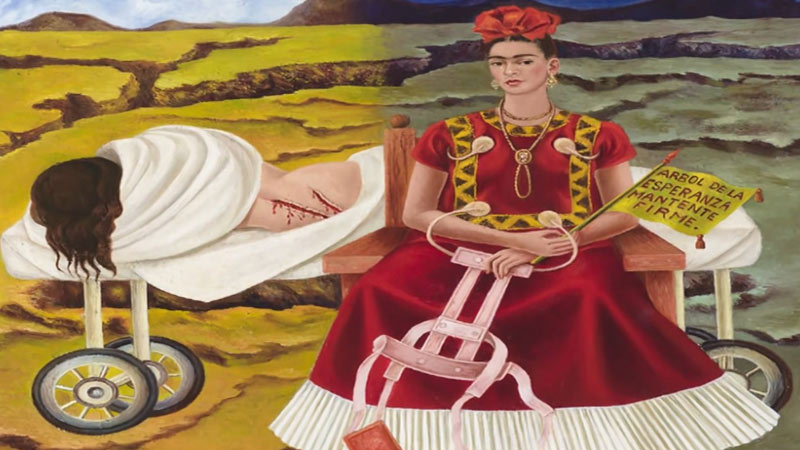
Frida Kahlo’s art style has had a profound impact on the art world. Her use of personal symbolism and allegory, as well as her unflinching depictions of physical and emotional pain, paved the way for other artists to explore similar themes in their work.
Frida Kahlo’s art style holds immense importance in the art world, contributing to several significant aspects that have shaped the trajectory of art history.
Here are key reasons why her art style is considered crucial:
Personal and Political Expression
Kahlo’s art style served as a powerful medium for personal and political expression.
Through her self-portraits and symbolic imagery, she conveyed her physical and emotional pain, grappling with issues of identity, gender, and the socio-political climate of her time.
Her art became a means of giving voice to her experiences and the experiences of marginalized groups.
Championing Mexicanidad and Indigenous Culture
Kahlo’s art played a pivotal role in championing Mexicanidad, a celebration of Mexican identity and culture.
She incorporated elements of indigenous Mexican art, folk traditions, and symbolism into her work, showcasing the richness and diversity of Mexican heritage.
Her art contributed to a renewed appreciation for Mexican culture and its significance in the global art scene.
Breaking Gender Stereotypes
Kahlo’s art challenged traditional gender stereotypes and norms. Through her self-portraits, she presented a powerful and unapologetic image of herself, often wearing traditional Mexican attire.
Her art challenged prevailing notions of femininity, beauty, and gender roles, inspiring generations of artists to explore and deconstruct societal expectations.
Impact on Surrealism and Contemporary Art
While Kahlo was associated with Surrealism, her unique blend of personal narrative, symbolism, and cultural elements set her apart.
Her impact on Surrealism extended beyond stylistic boundaries, influencing contemporary artists who appreciated her fusion of reality and dreamlike symbolism.
Her art opened new avenues for exploring personal narratives within the broader context of contemporary art.
Feminist Art Movement
Frida Kahlo is often considered an early feminist artist, and her work has been embraced by the feminist art movement.
Her exploration of female identity, reproductive rights, and the female experience resonated with feminist artists and scholars.
Her art became a touchstone for discussions on gender, agency, and empowerment within the art world.
Enduring Popularity and Cultural Iconography
Kahlo’s art style has contributed to her enduring popularity as a cultural icon. Her distinctive self-portraits, use of symbolism, and vibrant colors have made her work instantly recognizable.
The commercialization of her image and the widespread dissemination of her art through various mediums have cemented her status as a cultural icon with global influence.
Influence on Latin American Art
Kahlo’s impact extends beyond the global art scene to the realm of Latin American art.
Her celebration of Mexican culture and her exploration of personal and cultural identity have influenced subsequent generations of Latin American artists who continue to draw inspiration from her work.
In essence, Frida Kahlo’s art style holds importance for its role in advancing personal and political expression, championing cultural identity, challenging gender norms, impacting art movements, and enduring as a symbol of empowerment and resilience.
Her contributions continue to resonate in the ongoing dialogue within the art world and beyond.
Life Story of Frida Kahlo
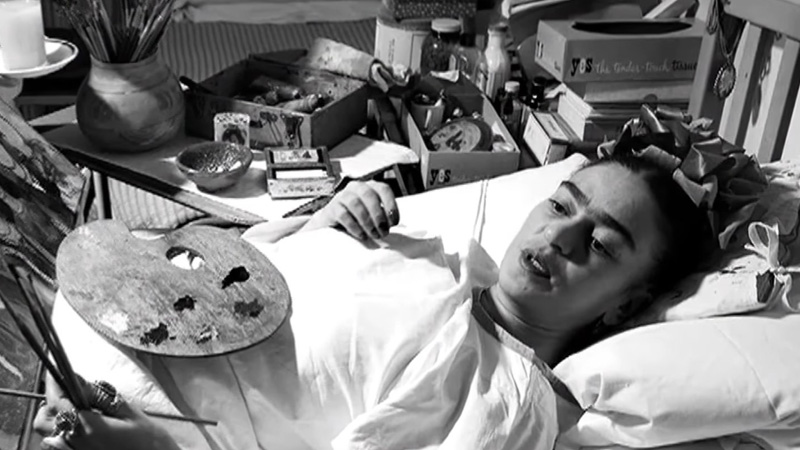
The life of this amazing artist is very moving and sorrowful. Still, she managed to over her challenges. Here are some of the turning points in her life:
Bus Accident and Physical Disabilities
In 1925, at the age of 18, Frida Kahlo was involved in a bus accident that left her with lifelong physical disabilities.
She suffered multiple fractures in her spine, pelvis, and other parts of her body, and was forced to spend months in a full-body cast. The accident left her with chronic pain and mobility issues, which would inspire much of her art.
Relationship With Diego Rivera
Frida Kahlo married the famous Mexican muralist Diego Rivera in 1929, and their relationship was famously tumultuous.
Both Frida and Diego had numerous affairs throughout their marriage, and they divorced in 1939 before remarrying a year later. Despite their infidelities, they remained deeply connected and supportive of each other throughout their lives.
Affairs With Men and Women
Frida Kahlo was known for her numerous affairs with both men and women. She had relationships with prominent figures such as Leon Trotsky and Josephine Baker, as well as with her own friends and acquaintances.
Her sexual and romantic experiences, as well as her own fluid sense of gender and sexuality, are reflected in her art.
Personal Struggles and Resilience
Throughout her life, Frida Kahlo faced numerous personal struggles, including chronic physical pain, depression, and anxiety. She also faced discrimination as a woman and as a Mexican artist in a male-dominated art world.
Despite these challenges, she remained resilient and committed to her art, using it as a means of exploring her own emotions and experiences.
She also became a vocal advocate for women’s rights and the rights of minorities, using her platform to speak out against injustice and inequality.
Frida Kahlo’s personal struggles and resilience are a central part of her enduring legacy as an artist and feminist icon. Her life story, marked by both physical and emotional pain, serves as a testament to the power of art as a means of self-expression and healing.
Feminist Icon and Advocate
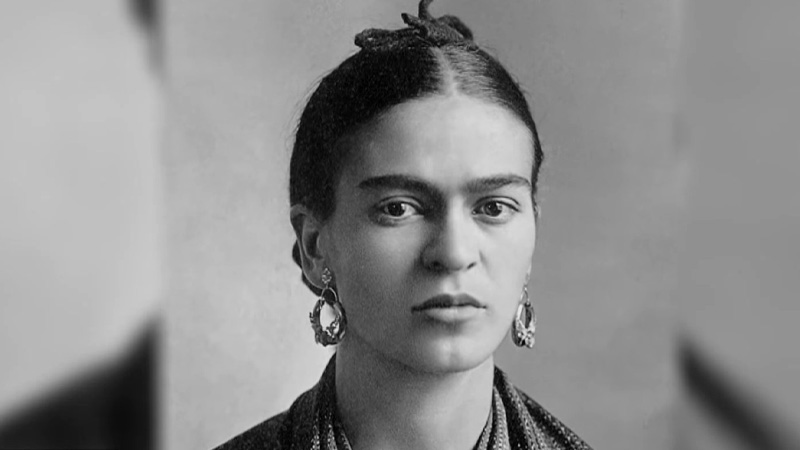
Frida Kahlo’s art challenged traditional gender roles and norms in a number of ways. Her self-portraits, in which she often depicted herself with a mustache or other masculine traits, were a direct challenge to traditional notions of femininity and beauty.
She also explored themes related to gender and sexuality in her art, often celebrating female sexuality and the female form.
Advocacy for Women’s Rights
Frida Kahlo was a vocal advocate for women’s rights throughout her life. She used her platform as an artist to highlight issues related to women’s oppression and inequality, and she was involved in a number of feminist organizations and movements.
She also famously declared that she did not believe in communism or capitalism, but in “humanity” and “the fight for equality.”
Role as a Feminist Icon
Frida Kahlo’s legacy as a feminist icon has only grown in recent years. Her art and personal life have inspired generations of women to challenge traditional gender roles and embrace their own identities and experiences.
She has become a symbol of strength and resilience, particularly for women who have faced their own struggles with physical and emotional pain, discrimination, and oppression.
Frida Kahlo’s advocacy for women’s rights and her challenges to traditional gender roles are a key part of her enduring legacy as an artist and feminist icon.
Her art and personal life continue to inspire and empower individuals around the world, offering a powerful and important perspective on the fight for gender equality.
Frida Kahlo As the Symbol of Mexican Culture and Identity

Frida Kahlo’s art is deeply rooted in Mexican culture, history, and mythology. Her work often features images of Mexican landscapes, religious iconography, and traditional dress, as well as references to pre-Columbian art and mythology.
Frida Kahlo stands as an enduring symbol of Mexican culture and identity, embodying the spirit and complexities of her homeland.
Here are key ways in which she represents Mexican culture:
Celebration of Mexicanidad
Kahlo’s art is deeply rooted in Mexicanidad, a term encompassing the unique cultural identity of Mexico.
Through her use of vibrant colors, indigenous motifs, and traditional attire in her paintings, Kahlo celebrated the richness and diversity of Mexican culture.
Depiction of Folk Traditions
Kahlo incorporated elements of Mexican folk traditions, such as folk art, embroidery, and religious iconography, into her artworks.
By doing so, she not only paid homage to these traditions but also elevated them to the realm of high art, contributing to a sense of cultural pride.
Use of Indigenous Symbols
Indigenous symbols and imagery frequently appear in Kahlo’s art. Symbols like monkeys, which hold cultural significance in Mexican folklore, and references to pre-Columbian art and mythology are woven into her paintings.
This incorporation of indigenous symbols reinforces her connection to Mexico’s pre-Hispanic past.
Mexican Revolution and Political Engagement
Kahlo’s life unfolded against the backdrop of the Mexican Revolution, and she was politically engaged throughout her career. Her art often addressed socio-political issues and depicted the struggles of the working class.
In this way, Kahlo became a symbol of resilience and political consciousness within Mexican culture.
Promotion of Mexican Craftsmanship
In both her art and personal style, Kahlo showcased Mexican craftsmanship. She wore traditional Tehuana dresses, adorned herself with pre-Hispanic jewelry, and collected folk art.
This promotion of local craftsmanship and traditional attire emphasized her pride in Mexico’s artistic heritage.
Influence on Contemporary Mexican Art
Kahlo’s impact extends beyond her lifetime. She has influenced generations of Mexican artists who continue to draw inspiration from her fusion of cultural elements, personal expression, and political engagement.
Her legacy is embedded in the fabric of contemporary Mexican art.
Cultural Ambassadorship
Frida Kahlo’s global recognition and her role as a cultural ambassador for Mexico have helped elevate Mexican art onto the international stage.
She remains a symbol not only for Mexicans but also for people worldwide who appreciate and celebrate Mexican culture through her artistic legacy.
Frida Kahlo’s life, art, and persona have become synonymous with Mexicanidad, making her an enduring symbol of Mexican culture and identity.
Her legacy continues to be a source of inspiration for those who seek to explore and celebrate the rich tapestry of Mexican heritage.
Frida Kahlo’s Life and Legacy: At A Glance
| Aspect of Frida Kahlo’s Life and Legacy | Description |
|---|---|
| Unique Artistic Style | Influenced by Mexican folk art, religious iconography, and the European avant-garde; characterized by bright colors, flattened perspective, and surreal imagery; recognized as one of the most distinctive and recognizable styles in modern art |
| Personal and Introspective Subject Matter | Inspired by her own experiences of pain, suffering, love, and loss; addressed social and political issues, including gender inequality, colonialism, and Mexican identity; continues to resonate with audiences today |
| Life Story | Survived a devastating bus accident at age 18 that left her with chronic pain and disabilities; had a tumultuous and passionate relationship with Diego Rivera, with both having numerous affairs throughout their marriage; had affairs with men and women; battled physical and emotional pain throughout her life |
| Feminist Icon and Advocate | Challenged traditional gender roles and advocated for women’s rights through her art and political activism; became a symbol of women’s strength and resilience in the face of adversity |
| Symbol of Mexican Culture and Identity | Represented Mexican culture in her art, drawing on imagery from pre-Columbian mythology and folklore; celebrated her Mexican heritage and identity through her art and personal style; continues to be an important figure in Mexican culture and identity |
| Legacy and Influence | Continues to inspire and captivate audiences around the world; remains an important cultural icon and symbol of empowerment for women; has had a significant influence on contemporary artists and popular culture |
Note: This table is meant to provide a brief overview of some of the key aspects of Frida Kahlo’s life and legacy and is not meant to be exhaustive.
FAQs
Frida Kahlo’s artistic style was inspired by a range of influences, including Mexican folk art, religious iconography, and the European avant-garde. She also drew inspiration from her own personal experiences, including her physical disabilities, her tumultuous relationship with Diego Rivera, and her political activism.
Frida Kahlo’s art explored a wide range of themes, including pain, suffering, love, loss, and the human experience. She also addressed social and political issues, including gender inequality, colonialism, and Mexican identity.
Frida Kahlo and Diego Rivera had a tumultuous and passionate relationship that spanned several decades. They married in 1929, but both had numerous affairs throughout their marriage. Despite their personal struggles, they remained committed to each other until Kahlo’s death in 1954.
Frida Kahlo’s art and life story have become a symbol of women’s strength and resilience in the face of adversity. She challenged traditional gender roles and advocated for women’s rights through her art and political activism, making her a powerful symbol of feminist empowerment.
Frida Kahlo’s legacy continues to inspire and captivate audiences around the world. Her art remains relevant and powerful, and her personal story has become a source of fascination for millions. She has also become an icon in popular culture, with her image appearing on a range of products and her personal style inspiring fashion designers. Her influence on contemporary artists is also significant, with her use of personal narrative and Mexican imagery inspiring a renewed interest in these themes across a range of artistic disciplines.
Conclusion
Frida Kahlo’s unique artistic style, introspective subject matter, personal struggles and resilience, advocacy for women’s rights, connection to Mexican culture and identity, and enduring legacy and influence have made her a cultural icon and symbol of strength and empowerment for people around the world.
Her art and personal story continue to inspire and captivate audiences, and her influence on contemporary artists and popular culture is significant.
Her indomitable spirit in the face of adversity continues to inspire individuals worldwide. As we explore why Frida Kahlo is famous, we find that it’s her ability to transform personal suffering into universal themes that keeps her relevant.
She reminds us that art has the power to heal and empower, transcending time and culture. Frida Kahlo’s legacy is not just artistic; it’s a testament to the enduring power of the human spirit.